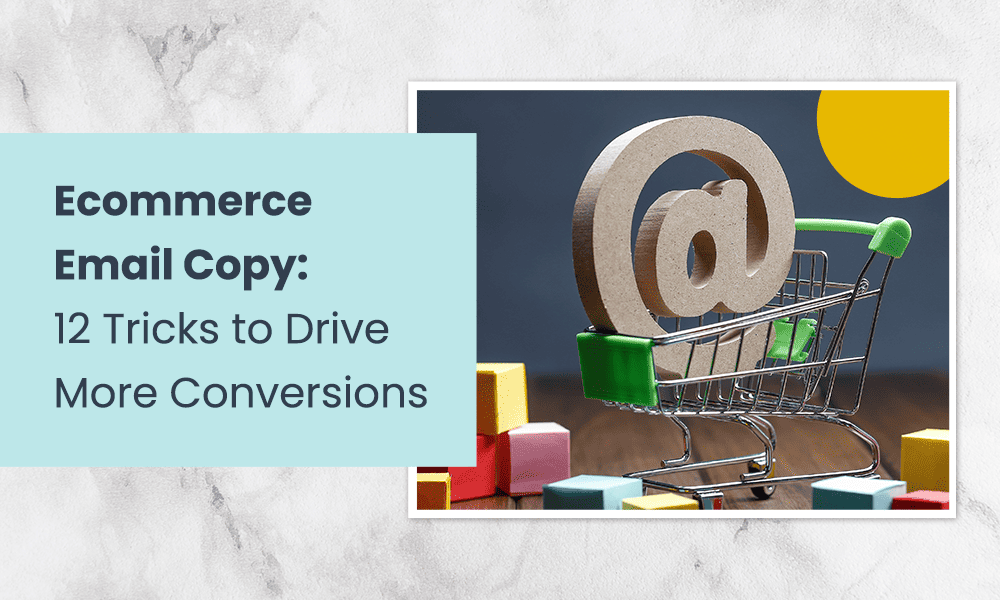With the rise of eCommerce, businesses of all sizes are turning to email marketing to reach their customers and drive sales.
However, crafting compelling email copy is more than just sending promotional messages. To be successful in eCommerce, your emails need to be engaging, persuasive, and personalized to your target audience.
In this blog post, we’ll explore the fundamentals of writing compelling eCommerce email copy and the tips and tricks to create messages that sell.
Let’s begin!
Table of Contents
1. Know Your Goal
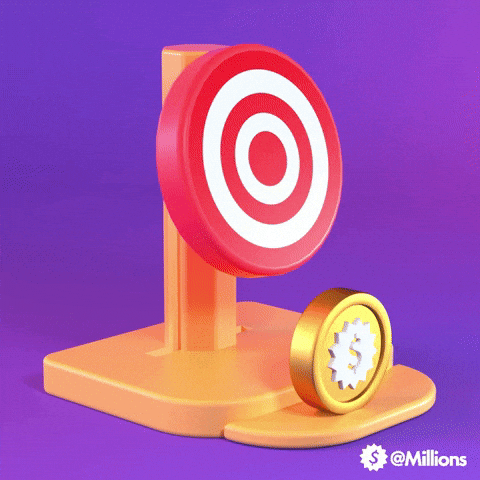
When crafting your email copy, it is important to start with a clear goal in mind. Do you want to promote a new product? Announce a special sale? Retarget customers who have abandoned their carts? Whatever the case may be, having a clearly defined goal helps to ensure that your email copy is focused and on target.
When defining your goal, consider what action you want your reader to take after reading the email. For example, if you’re introducing a new product, you may want readers to click through to the product page. If you’re announcing a sale, you may want them to use a discount code to complete their purchase.
Once you have a clear goal, use this as the focus of your email copy and make sure that each sentence leads the reader to take the desired action.
Read also: ECommerce Email A/B Testing Basics For Beginners
2. Use Customer Segmentation
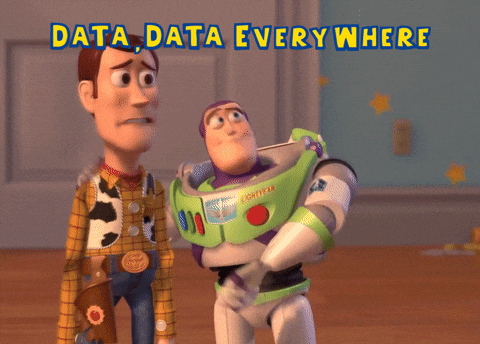
In order to maximize the effectiveness of your email campaigns, it’s important to segment your customer base and tailor messages according to different segments. It allows you to customize the messaging for each audience segment and provide more personalized experiences.
You can segment customers based on their purchase history, demographics, interests, location, online behavior, etc. This data can be collected from surveys, CRM data, eCommerce analytics, etc. Segmentation will enable you to create customized messages that target the specific needs of each customer segment.
For example, if you’re targeting customers who frequently purchase products from your store, you can send them offers for discounted items or exclusive rewards. Or, if you’re targeting customers who have recently abandoned their cart, you can send them timely reminders or incentives to encourage them to complete the purchase.
By segmenting customers and tailoring messages to each group, you can ensure that each message is relevant and engaging, which will lead to higher open rates and conversions.
Additionally, you should use dynamic content whenever possible to make sure that each email is unique and tailored to the recipient’s individual preferences. For instance, if a person has purchased a particular product in the past, they could receive an email with additional suggestions related to their purchase.
Read also: What Is Audience Segmentation & What Is Its Impact on Marketing
3. Use an Attention-Grabbing Headline
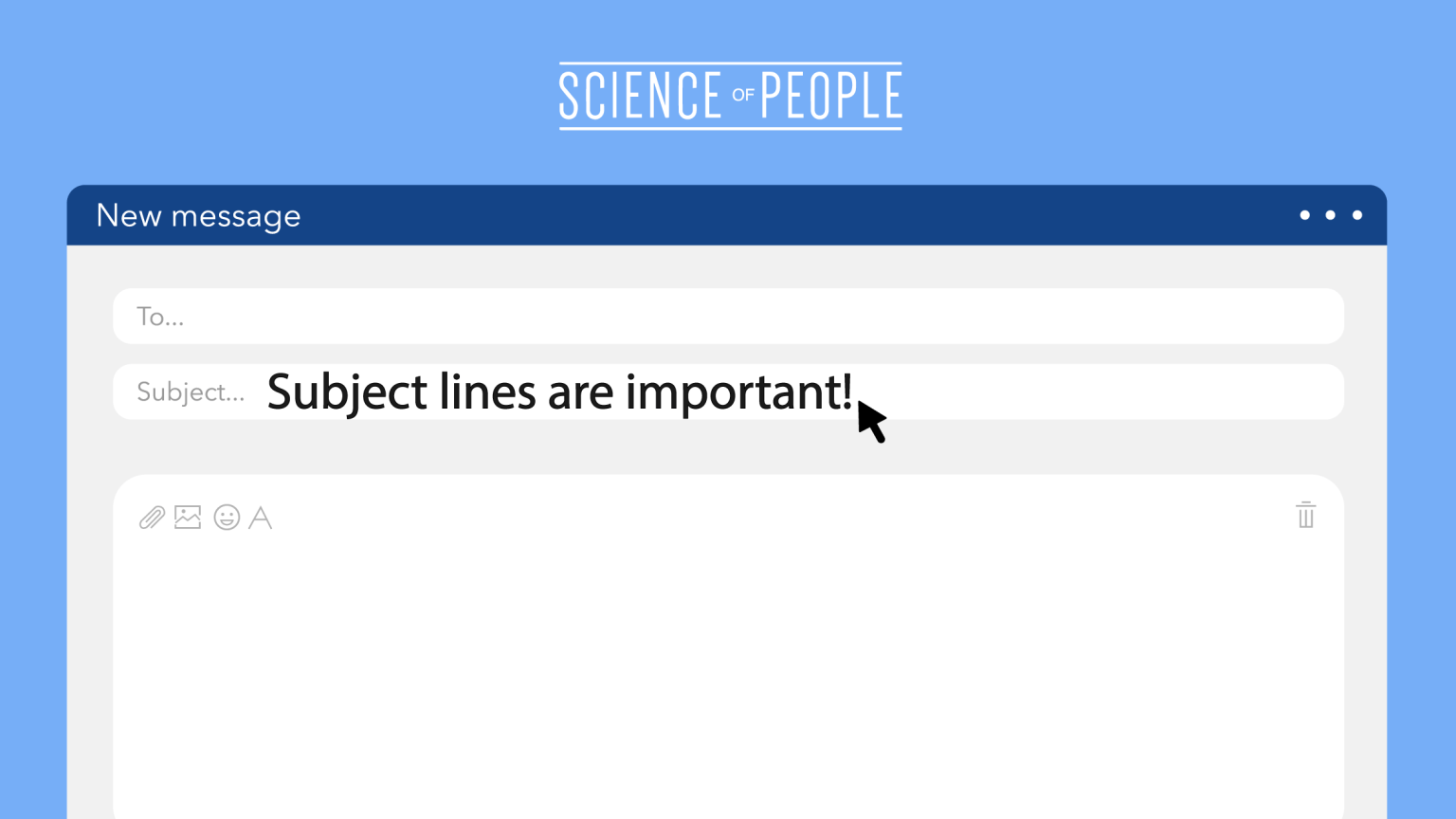
Creating an attention-grabbing headline is essential to get your email read by your target audience. An attention-grabbing headline should be short, punchy, and relevant to the content of your email. Your headline should give readers an immediate indication of what they can expect to gain from reading your email.
When crafting your headline, consider using keywords, questions, and numbers to create intrigue. For example, if you are sending out an email about a new product launch, you could use a headline like “Unlock the Secrets to Our New Product Launch Today”.
Your headline should also incorporate elements of urgency and scarcity to encourage readers to take action. Using words like ‘now’, ‘immediately’, or ‘today’ can help create a sense of urgency. Additionally, including phrases such as ‘limited time offer’ or ‘while stocks last’ can help create a sense of scarcity.
Lastly, it is important to ensure that your headline accurately reflects the content of your email. Make sure that any promises you make in the headline are backed up with relevant content in the body of the email. A great headline can be wasted if it does not match up with the content of the email.
By taking the time to craft an effective headline, you can ensure that more readers open and engage with your emails.
Read also: eCommerce Email Marketing UTM Parameters and How to Use Them
4. Use Power Words

When writing emails for your eCommerce site, use words that invoke emotion and power. Power words are descriptive and emotive words that help to stimulate interest and motivate action. They are attention-grabbing and help to create a sense of urgency. Examples of power words include: Amazing, Exclusive, Guaranteed, Limited, Now, Save, Unlock, and Urgent.
These words can help draw your customers in and make them more likely to click through and take action. Utilizing powerful words will help make your emails stand out from the crowd and increase your conversion rate. Plus, it’s an easy way to add some personality and energy to your messages.
When you use powerful words in your email campaigns, you want to make sure that the message is relevant and appropriate for the audience you are targeting. For example, if you’re targeting a younger audience, it might be more effective to use words like “epic” and “awesome”. If you’re targeting an older demographic, then words like “tremendous” and “luxurious” may be more effective.
Finally, keep in mind that different types of emails will require different types of power words. For example, if you’re sending out a promotional email, you may want to use words like “discount”, “offer”, and “sale” to get people interested.
On the other hand, if you’re sending out an informational email, words like “discover” and “unlock” can help pique your readers’ curiosity. Experiment with different power words to see what resonates best with your customer base.
25 eCommerce Tools to Boost Sales in 2023
5. Personalize It

Personalization is a key element in email marketing, as it helps you to connect with your customers on a more personal level. Personalizing emails can help make your content more engaging and effective, as customers are more likely to interact with emails that are tailored to their needs.
One of the most effective ways to personalize emails is to use a customer’s first name in the subject line. This can be done easily using dynamic tags that will automatically pull the first name from the customer’s profile.
If the customer has not given their first name, you can use their last name instead. Additionally, you can use their city or other demographic data such as age or gender.
You can also personalize emails by segmenting them into different categories based on customer interests or past purchase history. For example, if someone purchased an item in a specific category, they could be sent an email with promotions and discounts related to that product or category.
You can also send emails tailored to customers’ individual preferences, including preferred payment methods, special offers, and loyalty programs.
Personalizing emails allows you to deliver content that is relevant to each customer’s individual interests and needs. This can help to increase engagement, boost open rates, and drive conversions.
Read also: eCommerce Emails: 50+ Basic and Advanced Segmentation Strategies
6. Use Persuasive Language

Persuasive language is essential to crafting effective email copy for your eCommerce site. By understanding how to use persuasive language, you can convince your customers to take action and increase the chances of them making a purchase.
When writing your emails, focus on the benefits of what you’re offering rather than the features. Highlight the results that customers can achieve from using your product or service, and make sure they know why they should buy from you.
You should also focus on the personal connection with your customer. Use language that speaks directly to them, addressing them as an individual rather than as part of a larger group. This will make them feel valued and increase the chances of them buying from you.
Finally, make sure to be concise. The more concise your emails are, the easier it is for customers to understand and take action. Keep your message short and to the point, and make sure that every word counts towards achieving your goal.
By understanding how to use persuasive language effectively, you can write compelling email copy that will help drive conversions on your eCommerce site. With a bit of practice, you can become an expert in crafting persuasive emails that will encourage your customers to take action and make a purchase.
Read also: eCommerce Transactional Email Optimization: What to Do & Not to Do
7. Use Second Person Point of View
One of the most effective ways to create engaging email copy for eCommerce sites is to use the second-person point of view. This means addressing your audience with words like “you”, “your”, and “yours”. This type of writing creates a sense of connection and familiarity, allowing you to make a personal connection with your readers.
When using the second-person point of view, it is important to keep the focus on the customer and their needs, rather than on yourself or your product. Focus on making it clear how your product will add value to their lives and how it can solve their problems.
For example, if you want to encourage someone to purchase a product from your eCommerce site, you could say, “Discover the perfect outfit for you today!” This helps to create a more direct connection with the reader, allowing them to feel like the message was specifically crafted for them.
Another way to use the second-person point of view is to ask questions. Asking questions can help to engage the reader and make them feel like they are part of a conversation. For instance, you might say, “Are you looking for a new outfit for this weekend?” or “What would you like to accomplish with this purchase?” Asking questions allows you to gain insight into your customer’s needs and offer solutions accordingly.
Using the second-person point of view in your email copy can help you create a more personal connection with your readers and get better results from your campaigns. Try incorporating this technique into your emails and see how it impacts your conversions!
Read also: Winning In A Competitive World: ECommerce Marketing 101
8. Use Scarcity
Scarcity is a powerful tool for driving conversions in email campaigns. It encourages people to act quickly and decisively, rather than put off a purchase decision. This strategy can be used by creating a sense of urgency by highlighting limited-time offers or low stock levels.
By creating a sense of urgency and scarcity, you can influence shoppers to make a purchase decision sooner rather than later. For example, you could create an email campaign offering a discount on a certain product with a countdown timer ticking away in the background, or offer a product that is in low stock and won’t be available again. This will encourage shoppers to purchase quickly, as they fear they might miss out on the offer or product.

In addition to using timing as a way to create scarcity, you can also use other tactics. For instance, you could feature exclusive offers or discounts available only to those who have subscribed to your mailing list, or limited edition products. You can also highlight the most popular products and how many customers have already purchased them.
To create a comprehensive email campaign, scarcity should be used in conjunction with other tactics, such as personalization, powerful words, and call-to-actions.
Read also: 5 eCommerce Email Personalization Strategies [+ Examples]
9. Use Imagery and Videos
When it comes to writing email copy for your eCommerce site, you should also consider the use of imagery and videos. Images help to make emails more visually appealing and engaging, while videos can be used to add an extra layer of depth and interest.
When selecting images for your emails, keep them relevant to the message you’re trying to convey. Also, consider using high-quality, professional images that reflect your brand identity and message. If you don’t have access to professional images, then you can use free stock images available from a variety of sources.
Videos are also incredibly effective for marketing emails. Short videos can give viewers a taste of what to expect when they visit your website. A great example of this is a product demonstration video that showcases the features and benefits of a particular item. This can be especially helpful for customers who may not have heard about it before. Consider using an explainer video or a customer testimonial to add a personal touch and drive conversions.
As with all other elements of your eCommerce email campaigns, images and videos should be tested regularly to ensure that they’re effectively increasing engagement with your emails.
10. Use Customer Testimonials
Customer testimonials are a great way to build trust in your eCommerce site. Testimonials from past customers can help potential customers feel confident that they are making the right decision when they decide to purchase from you.
When incorporating customer testimonials into your email copy, be sure to focus on the customer’s experience with your products or services and the results they experienced. Include a few sentences about why the customer chose to shop with you over competitors, how their shopping experience was, and any other positive feedback they may have.
Make sure to include the customer’s name and an image if possible to add credibility to the testimonial. Customer photos also add a personal touch to the testimonial, helping to create an emotional connection with the reader, like this example 👇🏻

Include a few customer testimonials in your email copy to build trust and demonstrate that your eCommerce site is reliable and trustworthy. This will help encourage customers to buy from you.
Convert Shopify data into campaign gems with EngageBay
11. Use Social Proof
Social proof, also known as “word of mouth marketing”, can be a powerful tool for increasing the effectiveness of your eCommerce email campaigns. Social proof consists of user reviews and ratings, expert recommendations, and endorsements from influencers or celebrities. By showcasing the positive feedback your brand has already received from customers and other sources, you can strengthen your message and encourage more conversions.
When incorporating social proof into your emails, make sure that it is relevant to your product or service. For example, if you are selling a new product, you may want to include customer reviews that highlight its best features. Or if you are promoting a discount offer, it may be helpful to include a testimonial from someone who has already taken advantage of the deal.
You can also use social proof to show potential customers how many people have already purchased your product or service. This kind of data can be an effective way to persuade hesitant customers and give them the confidence to make a purchase.
Here’s an example from EngageBay 👇🏻
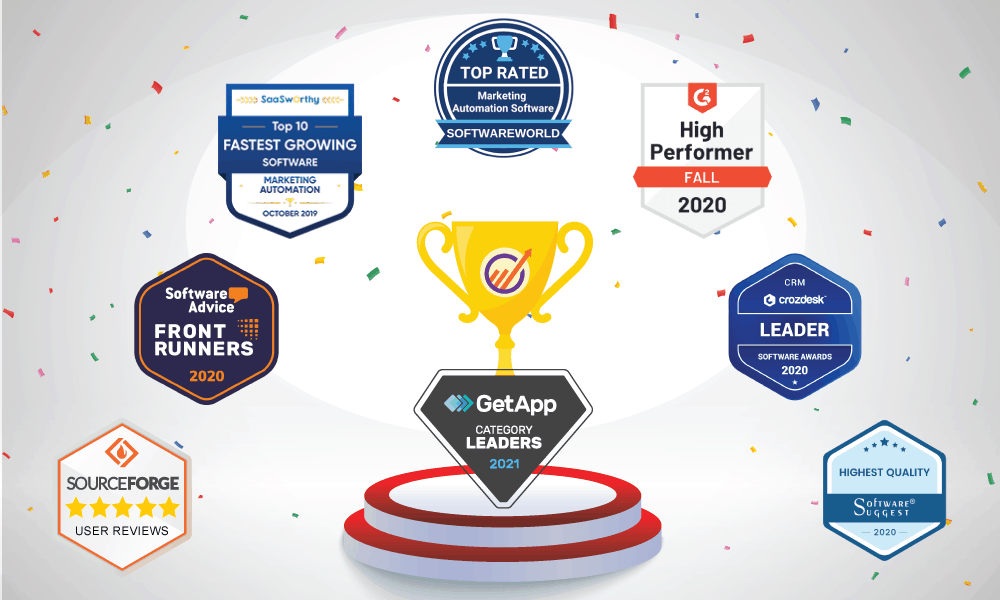
It’s important to note that social proof should not be used as a substitute for good content. Make sure that your emails contain original, compelling copy that speaks to the specific needs and interests of your target audience. When used in conjunction with high-quality content, social proof can be an effective way to boost your email conversion rate.
12. Call to Action
A Call to Action (CTA) is a powerful way to urge your readers to take action and convert. Your CTA should be clear, concise, and persuasive. By focusing on the end goal of what you want the reader to do, you’ll increase the likelihood that they’ll take the desired action.
When crafting a CTA, it’s important to create urgency and direct the reader toward a specific action. It should grab their attention and make them want to act now rather than later. Use phrases like “Buy now”, “Get your copy today”, or “Start now” to create a sense of urgency.
Another important aspect of a CTA is to make it obvious where the reader needs to click. Incorporate buttons and links with colors that stand out from the rest of the content. This will allow your reader to quickly identify where they need to go for the desired action.
Finally, make sure you measure the effectiveness of your CTA. Take advantage of A/B testing to determine which CTA works best for your audience. This will help you refine and optimize your CTAs over time.
By following these tips, you can ensure that your email campaigns are effective in driving conversions and increasing sales. Remember to keep your CTA clear, concise, and persuasive so that your readers are more likely to take action.
15 Great Sales Page Examples (And Why They Convert)
Bonus Tip: Test, Test, Test!
Testing your email copy is one of the most important steps to ensuring your eCommerce site has successful email campaigns. You can test different elements such as subject lines, body copy, images, and calls to action to see what works best. This testing process allows you to continually optimize your emails to maximize conversions.
When testing, it’s important to set up a few variations of the same email campaign. You can test different subject lines, body copy, and CTAs to see which one gets the best results. It’s also important to track results so that you can see how each variation performs. Once you have data on which versions are performing better than others, you can make changes accordingly.
It’s also important to test the frequency of your emails. You don’t want to send too many emails that customers will find annoying, but you also don’t want to send too few emails that customers won’t find valuable. Try sending emails at different times of day and week and track the results to find what works best for your eCommerce store.
Finally, it’s essential to test different types of email campaigns. Different types of emails can help achieve different goals – such as announcing a new product, offering a promotion or sale, or even just staying in touch with customers. Test different types of emails to determine which ones result in the highest conversions for your eCommerce site.
By testing different elements of your email campaigns, you can ensure that your eCommerce site is getting the most out of its email marketing efforts. With this data, you can optimize your email campaigns for maximum effectiveness.
19 eCommerce Best Practices to Win Customer Confidence in 2023
Conclusion
Writing high-converting email copy for your eCommerce site doesn’t have to be complicated. By following these steps, you can ensure that your email campaigns are high-converting and effective. And don’t forget to track the performance of your emails.
You should keep track of metrics such as open rates, click-through rates (CTRs), unsubscribes, etc., in order to gain insights into what’s working and what needs improvement. This data can then be used to refine your approach, so you know how to reach more customers more effectively.
With a little planning and perseverance, you’ll soon find yourself writing email copy that drives conversions for your eCommerce site!
And for the most affordable eCommerce marketing solution, try EngageBay.
